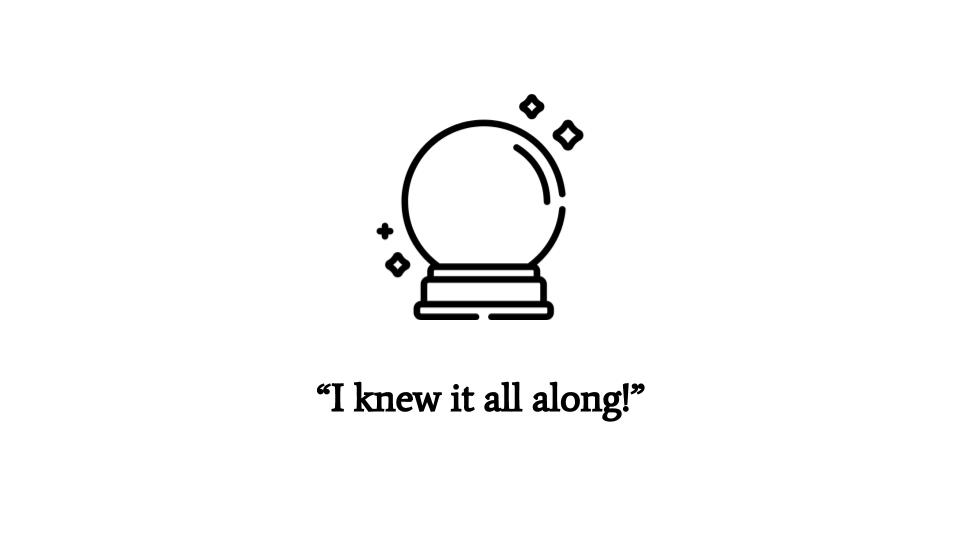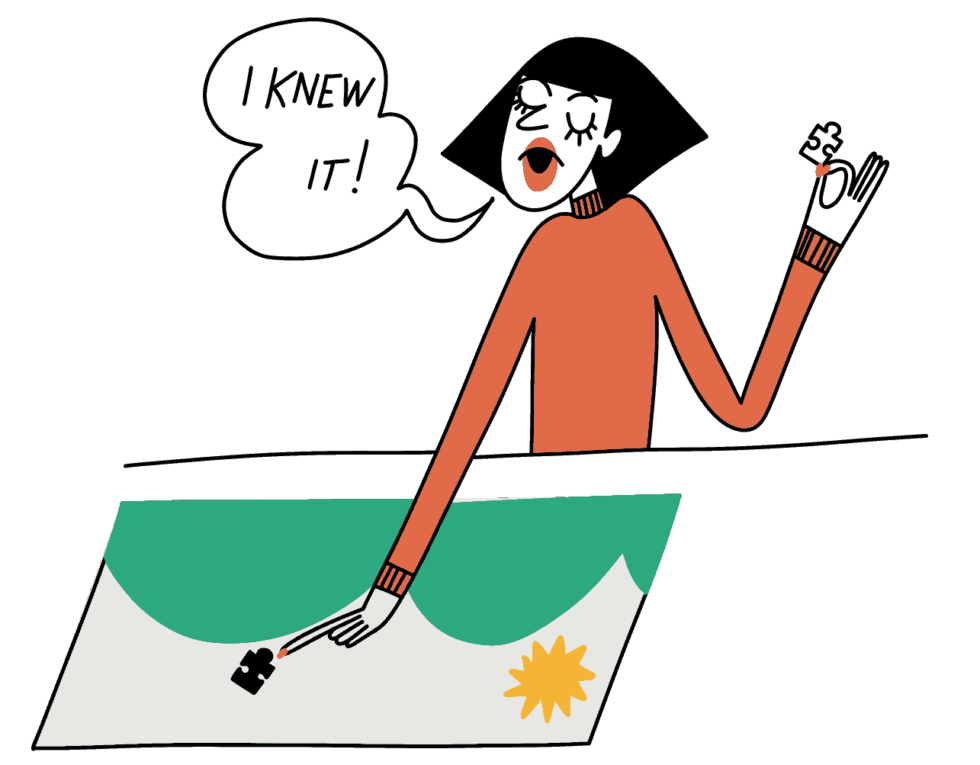

Roese and Vohs call this degree of hindsight bias “inevitability.” The last level, “foreseeability,” entails believing that we could have foreseen the event. The second level is centered around our belief that a past event was inevitable. We often do this when claiming we said something when we didn’t. The first level is “memory distortion.” This involves misremembering a past judgment or opnition. 2 According to psychological scientists Neal Roese and Kathleen Vohs, there are three stacking levels on which this can occur. The hindsight bias happens when new information surrounding a past experience changes our recollection of that experience from an original thought into something different. He overestimates his ability to have predicted the end of his relationship with Jane once the relationship is suddenly over. An unforeseen break-up becomes foreseeable to John after it takes place. He had known it all along, and so this bad news from Jane was no surprise to him. Now that he looks back at his relationship with Jane, he saw many signs that pointed to trouble: cancelled plans, awkwardness, being ignored by her friends, and so forth. He knew it! John tells himself, and then his friends. It turns out, Jane is not so happy with the relationship. Is everything alright? Does Jane still love him? He did notice some tension between them the last few weeks. One day after work, John receives a message from Jane: ‘We need to talk.’ Suddenly, he gets worried. They are madly in love, and have plans to move in together in a few months - at least that’s what John thinks. Analyzing the results of your decisions will help you understand what went right or wrong and help you identify other solutions or opportunities.Consider this hypothetical: John and Jane have a fantastic relationship. Review your journal entries: A decision journal can help allow for better decision-making in the future, as well as prevent second-guessing.

Additionally, weighing all information is essential, including placing more weight on valuable information. This allows you to understand better what you thought would happen when making the decision.

These decision journals help detail when and how decisions were made. In large part, such a document will help ensure you can accurately reflect on a situation. Keep a journal or diary: This will create a record of the decision-making process, allowing you to revisit the reasons you came to certain conclusions.Because circumstances change, this can help you in the future if you encounter similar situations. Brainstorm alternative outcomes: Think about other things that might have happened in the situation you're considering.With this, we become less critical of our decisions, leading to poor decision-making in the future. Hindsight bias is caused by: The idea is that once we know the outcome, it’s much easier to construct a plausible explanation. Hindsight bias is when a person looks back at an event and believes they predicted the outcome, even if they failed to act on that "prediction." Unfortunately, this leads people to think that their judgment is better than it is. One key to managing hindsight bias involves documenting the decision-making process via a journal (e.g., an investment diary).In investing, hindsight bias may manifest as a sense of frustration or regret at not having acted in advance of an event that moves the market.Hindsight bias can negatively affect decision-making.It causes overconfidence in one's ability to predict other future events and may lead to unnecessary risks.Hindsight bias is a psychological phenomenon in which one becomes convinced they accurately predicted an event before it occurred.


 0 kommentar(er)
0 kommentar(er)
